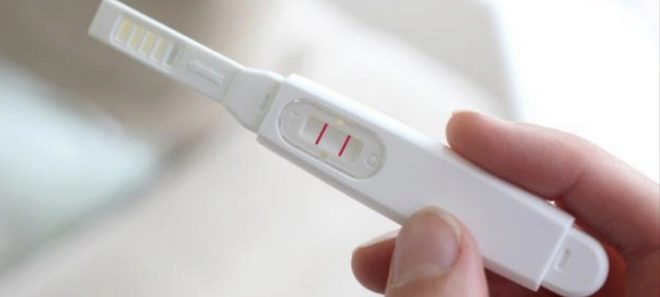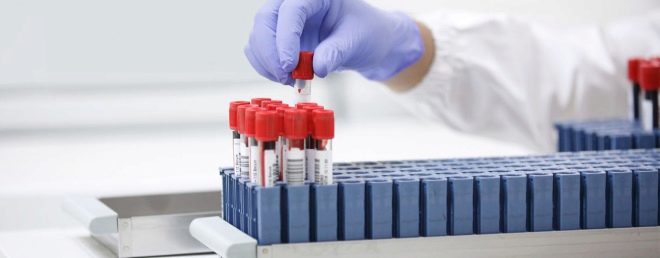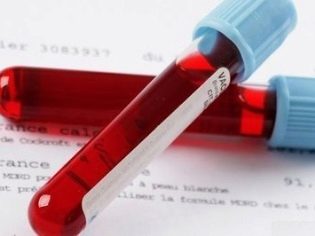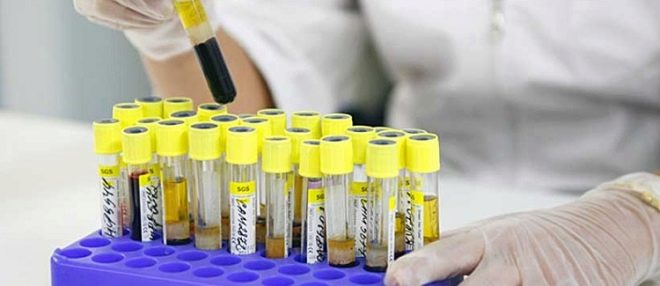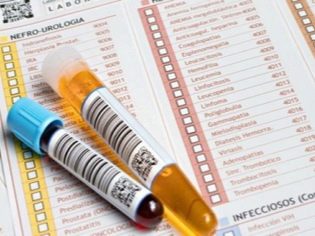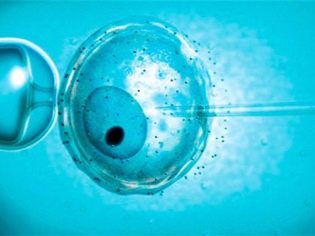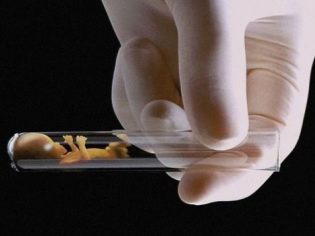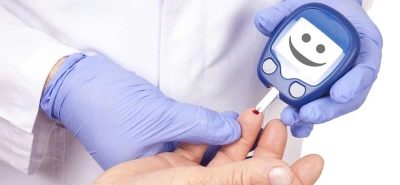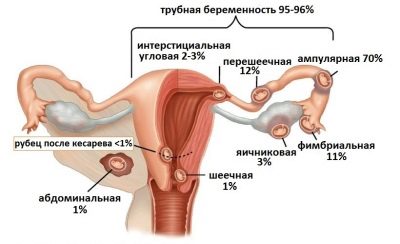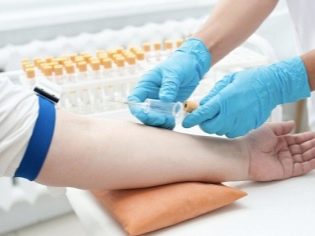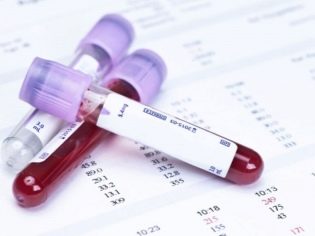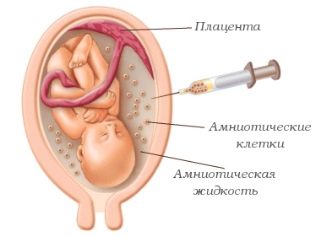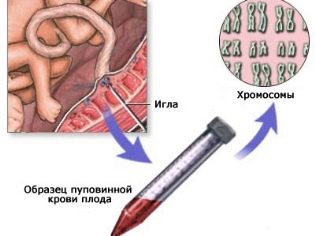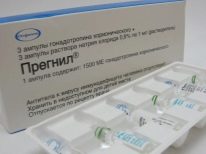HCG analysis during pregnancy: weekly rates and transcript
The analysis on hCG is one of the first for a woman who is going to become a mother. It is made at home and in the laboratory, it is judged by the results of the fact of pregnancy, the period of gestation, and even whether the baby is healthy.
What this analysis represents, how it is carried out, how to understand its results and what to do in case of deviations from the norms, we will tell in this article.
What it is?
After fertilization has taken place, the blastocyst, being in constant division, moves into the uterus, which for the next nine months will become the “home” for the baby. This route runs through the pipe and takes an average of six to eight days.
If the goal is successfully achieved, the ovum gets the opportunity to "catch" the softened endometrium of the uterus under the action of progesterone. This process is called implantation.
It is from this moment inside the future mother begins to produce a special hormone. It produces embryonic structures, in particular, the chorion. Therefore, the substance is called human chorionic gonadotropin, and in abbreviated form - hCG (permissible medical designations are FSHA, GPHA, GPHA1, HCG, LHA, TSHA).
The physiological function of this hormone, like of all gonadotropic hormones, is the regulation of the functioning of the sex glands. In connection with the onset of pregnancy, they must produce well-defined hormones and substances in order for the embryo to receive the most optimal conditions for its growth and development.
The concentration of the substance in the blood of the future mother is increasing constantly, an increase occurs every 2 days. The peak of hCG reaches approximately 12 weeks of pregnancy, and then it begins to gradually decrease, since in this hormone there is no longer an urgent need for the development of the child - many babies and the placenta begins to produce many hormones.
The chemical structure of the hormone is based on two subunits - alpha and beta. Alpha (α) completely repeats similar units of many other female hormones, therefore it is not of diagnostic value. But the beta hCG (β-subunit) does not have its own kind, it is different from all other hormones. It is based on it and the existing laboratory tests and home tests for hCG.
The importance of this substance for the flow of carrying a baby is beyond doubt. Under the influence of chorionic gonadotropin, the corpus luteum is not absorbed, as it usually happens at the end of the cycle in non-pregnant women, but is preserved and serves as a source of the most important hormones - progesterone and estrogen. At 12 weeks, the placenta will assume the function of the corpus luteum, but there are no alternatives in the first three months of pregnancy.
Under the influence of hCG, the adrenal cortex begins to actively produce more than usual amount of glucocorticoids. This helps the mother's body to more easily survive the strongest stress, which is pregnancy.
Immunity under the action of these substances begins to be somewhat oppressed, which allows the baby not to be rejected.Whatever one may say, and the embryo is only half related to mom's organism, the second half of its genetic set is alien to its immune defense. If the immunity is not "relieve", he will regard the embryo as an alien object and will do everything possible to get rid of it.
A little later, when a young placenta appears, the chorionic gonadotropic hormone in every way contributes to its development, improves its structure, makes it more functional.
HCG is found not only in pregnant women, hormone can be present in small amounts in both men and women who are not pregnant. Growth of the hormone in these categories of patients is considered a sign of pathology., usually oncological or benign tumors. However, during pregnancy, the importance of gonadotropin is given quite different.
Types of research, reliability
Research on HCG is home and laboratory. Establishing the presence of a free β-subunit underlies the familiar conventional pharmacy pregnancy tests.
Laboratory tests can be performed with blood samples and urine samples. In the blood, the amount of gonadotropic hormonal substance rises earlier than in the fluid secreted by the kidneys, and therefore to find out if there is a pregnancy at all, in the earliest terms, it is most likely due to laboratory testing of a blood sample.
In a laboratory study, traces of free beta subunit hCG are determined in blood serum or in the fluid secreted by the kidneys.
If you know that the level of gonadotropin increases approximately every two days, increasing approximately twice, it becomes clear that a day after implantation there is absolutely no way to find out whether the pregnancy has occurred or not.
But already after 4-6 days after implantation, the fact of pregnancy will become obvious to the laboratory technician.
The hormone enters the urine from the blood when its concentration becomes high enough. Therefore, to make rapid tests from the nearest pharmacy or store before the delay starts, there is no point.
To understand how the level of gonadotropin is growing, you need to imagine its average number by days that have passed since the woman’s expected ovulation. The release of the egg occurs approximately on the fourteenth day of the cycle (if the woman has a standard 28-day one). If the cycle lasts a little longer, for example, thirty days, then ovulation usually falls on day 16.
From this moment starts the countdown of the so-called DPO (these are the days after ovulation). We remember that the blastocyst is implanted only for 6-8 days, and therefore in the first 5 days the level of hCG will not talk about the presence of pregnancy, and in general will not talk about anything.
From the moment of implantation, provided that the embryo is properly anchored, the dynamics will be something like this:
Chorionic gonadotropin growth at the beginning of gestation:
The time from the middle of the cycle | Average number | Threshold of low tolerance | Maximum allowed threshold |
7 DPO | 4 | 2 | 10 |
8 DPO | 7 | 3 | 18 |
9 DPO | 11 | 5 | 21 |
10 DPO | 18 | 8 | 26 |
11 DPO | 28 | 11 | 45 |
12 DPO | 45 | 17 | 65 |
13 DPO | 72 | 22 | 105 |
14 DPO | 105 | 29 | 170 |
15 DPO (start delay) | 160 | 39 | 270 |
16 DPO | 260 | 68 | 400 |
17 DPO | 410 | 120 | 580 |
18 DPO | 650 | 220 | 840 |
19 DPO | 980 | 370 | 1300 |
20 DPO | 1380 | 520 | 2000 |
21 DPO | 1960 | 750 | 3100 |
22 DPO | 2680 | 1050 | 4900 |
23 DPO | 3550 | 1400 | 6200 |
24 DPO | 4650 | 1830 | 7800 |
25 DPO | 6150 | 2400 | 9800 |
26 DPO | 8160 | 4200 | 15600 |
27 DPO | 10200 | 5400 | 19500 |
28 DPO (two weeks delay) | 11300 | 7100 | 27300 |
The HCG test at home has a slight sensitivity - from 15 to 25 units. Therefore, even a good test theoretically can not catch the concentration of the desired substance in the urine before the delay. Exceptions are cases when the amount of hCG is high, but we will look at these situations later.
When asked when can you do a test to find out exactly is there a pregnancyThe answer is quite simple - you can donate blood for a test for 8-10 days, if you count the time per day after ovulation, and you can start soaking the strip from the pharmacy in the morning urine from the first day of the next menstruation delay.
Purpose of the analysis
The main and main purpose of this analysis is to determine the fact of pregnancy. However, a study can be appointed after this issue is clarified. There may be several goals:
- it is necessary to clarify the duration of pregnancy (according to the quantitative level of the hormone, the doctor can make a conclusion about when exactly the implantation occurred, and calculate the approximate time of conception);
- to find an ectopic pregnancy (with it, the level of the hormone will be lowered, and the fertilized egg in the uterus will be absent);
- you need to understand whether pregnancy develops (if there are doubts about the normal development of the baby, its viability, an analysis of gonadotropin, necessarily in dynamics with intervals of several days will help to understand whether the baby is growing or its development has stopped);
- diagnosis of the state of the placenta (in the period of childbearing, an analysis of this hormonal substance may be needed if fetoplacental insufficiency is suspected);
- determining the concentration of the hormone produced by the chorion is included in the screening diagnosis of the first and second trimester (according to its level, we can judge the probability of the presence of chromosomal abnormalities in the child);
- the need to evaluate the effectiveness of the treatment provided with the threat of miscarriage (with the elimination of the threat, usually the level of the hormone is normalized).
How is the analysis done? Training
A blood sample requires a sample taken from a vein. Blood should be taken on an empty stomach in the morning. A few days before that, fatty and spicy foods should be removed from the diet, hormones, if allowed by the attending physician, and alcohol and strong coffee should not be taken.
Excessive exercise can change the hormones of women, and therefore they should also be abandoned. Strong stresses and nervous shocks also affect the amount of certain hormones, and therefore you need to sleep in a calm mood.
To study urine at home or in the laboratory, you will need a morning dose of fluid excreted by the kidneys. Before collecting urine A special pharmacy container with a lid should be purchased.
In the morning, a woman should be thoroughly washed out, closed the vagina with a cotton swab to prevent vaginal secretion from entering the urine, and collect at least 60-100 ml of liquid in a container.
Before conducting a home test you should carefully read the instructions for use. It can not be broken, otherwise the results may be unreliable.
The strip is lowered into the collected urine to the level indicated on it, after a 30-second pause, the strip is removed and placed on a dry and clean surface. The result is evaluated within 5 minutes.
All the second bars that appear after this time cannot be considered a reliable result. It should be remembered that on sale often come across defective rapid tests, and therefore it is better to buy two different tests from different manufacturers and conduct them simultaneously.
If a urine laboratory test is planned, a tightly closed container of liquid for analysis should be delivered to the laboratory as soon as possible, a maximum of 2 hours. After this time, the diagnostic value of urine, as a material, is largely lost.
Decryption
Only a doctor can competently perform a transcript of the finished blood or urine test for the content of gonadotropic hormone in them. But women who dream of becoming pregnant are very curious, as evidenced by their numerous posts on hCG in specialized forums on the Internet.To help them figure out, purely for reference purposes, we will describe how the decoding of this analysis is carried out.
To begin with, it should be said that different laboratories measure the concentration of the hormone substance in question using different diagnostic methods, respectively, they get different results. Most often, the difference in the results of different laboratories lies in the difference of units of measurement. The concentration of the hormone is usually determined in:
- honey / ml;
- mIU / ml;
- mIU | ml;
- ng / ml
Therefore, it’s safe to answer the women's question about what the entry “0.1 mIe ml” means that the laboratory that performed the analysis of its blood works according to the international standard, since milli-international units in which the result is recorded show about it.
Most of the existing laboratories today did not reach a common opinion about the error in determining the concentration of a given substance, and therefore their results may differ from each other. In order to avoid confusion, the doctors of the whole world decided to measure the hCG rates in values that are a multiple of the median (MoM). This greatly simplified the decoding.
The normal content of hCG in pregnant women is any value that is in the range from 0.5 to 2.0 MoM. If your result obtained in the laboratory does not indicate the value in MoM, it should be clarified in this medical institution which hormone indicators are accepted as the norm, and only then proceed to decipher.
HCG rates weekly
To make the task easier for future moms who really want to know if their hormone level meets the standards, we did pivot table of values in different units:
Gestational age | HCG in honey / ml | HCG in mMe / ml | HCG in ng / ml |
1-2 weeks | 25-156 | 5-25 (doubtful result) | - |
2-3 weeks | 101-4870 | 5-25 (doubtful result) | - |
3-4 weeks | 1100 – 31500 | 25-156 | - |
4-5 weeks | 2560 – 82300 | 101-4870 | - |
5-6 weeks | 23100 – 151000 | 1110 -31500 | - |
6-7 weeks | 27300 – 233000 | 2560 -82300 | - |
7-11 weeks | 20900 – 291000 | 23100 -233000 | 23,7 — 130,4 |
11-16 weeks | 6140 – 103000 | 20900 -103000 | 17,4 — 50,0 |
16-21 weeks | 4720 – 80100 | 6140 – 80100 | 4,67 — 33,3 |
21-39 weeks | 2700 – 78100 | 2700 -78100 | - |
Multiple pregnancy rates
If a woman becomes pregnant with twins or triplets, then the level of human chorionic gonadotropin will be approximately doubled or tripled. The fact is that the chorion of each fruit produces its own "hormonal support", which adds up to a high value during analysis.
Knowing this feature of hCG makes it possible to suspect multiple pregnancies at the earliest possible dates, before embryos can be examined and counted on ultrasound. As in the case of a single-pregnancy pregnancy, the level of the hormone increases with the bearing of several fruits gradually, and it also increases approximately every two days every two days.
Multiple pregnancies can be suspected on the basis of more than one analysis with elevated values, but after two or three similar studies that give a uniform increase in the concentration of the hormone in values that exceed the norm by 2-3 times.
In this case, the doctor will need to exclude certain pathological conditions, which may also be the cause of elevated hormone values, for example, cystic swelling, the presence of diabetes mellitus, and severe toxicosis in the future mother.
Table of the average norms of hCG during the carrying of twins:
Gestational period, weeks | The average range of concentrations of hCG (IU / ml) |
1-2 | 50 – 112 |
2-3 | 209 – 9740 |
3-4 | 2220 – 63000 |
4-5 | 5122 – 164600 |
5-6 | 46200 – 302000 |
6-7 | 54610 – 466000 |
7-11 | 41810 – 582000 |
11-16 | 12280 – 206000 |
16-21 | 9440 – 160210 |
21-39 | 5400 – 156200 |
To find out the norms characteristic for carrying triplets, one should multiply the base values (for a singleton pregnancy) by three. When carrying several babies, a woman should not rely on existing tabular values, because the norms of the chorionic gonadotropic hormone for several babies are very conditional and reflect only average values.
In each case, the indicators can be individualized. What is important is not the specific figures in the form of the analysis, but the dynamics of their growth.
Post-IVF rates
If a woman cannot become pregnant independently, modern methods of reproductive support, for example, IVF, will help her.
Fertilization takes place "in vitro", all this time a woman is prepared for implantation of ready-made embryos (three or five days) into her uterus using hormone therapy. The countdown for such a woman begins after the transfer. DPP is the days after embryo transfer.
If the transfer of embryos was successful, and at least one of them got accustomed, was able to implant and develops already on 4 DPP, the level of the chorionic hormone starts to grow, but it does it a little slower - an increase occurs every three days.
It is once every three days that many women who have gone through IVF, come to the laboratory for testing for hCG. This helps to keep track of how the embryo (s) develop, whether rejection has occurred, because there is such a risk in vitro fertilization.
Since, in order to increase the chances of pregnancy, not one embryo is placed into the uterine cavity, but several, two or even three babies can settle down. However, to answer the question how many babies will be, analysis of hCG after IVF cannot.
Multiple pregnancies can only be suspected in the case of natural conception. And hormone therapy before transplantation results in the level of hCG to elevated values, even if only one crust has taken root. To clarify this issue will be approximately 10-14 DPP five days during the passage of ultrasound.
What should be the level of chorionic gonadotropin after IVF is difficult to answer, it depends on the initial level of the hormone at the time of transfer of embryos. If one baby has got accustomed, the values will be slightly higher than the norms given in the table characteristic of singleton pregnancy; but the excess will not be 2 times. If two babies take root, then the concentration of the hormone hCG in the blood and urine will grow more rapidly.
On average, growth will be as follows.
The table of average values of hCG after IVF with engrafted twins:
Duration of gestation, weeks | The range of values of hCG, honey / ml |
1-2 | 50 – 600 |
2-3 | 3000 – 10000 |
3-4 | 20000 – 60000 |
4-5 | 40000 – 200000 |
5-6 | 100000 – 400000 |
6-7 | 100000 – 400000 |
7-11 | 40000 – 200000 |
11-16 | 40000 – 120000 |
16-21 | 20000 – 70000 |
21-39 | 20000 – 120000 |
Possible discrepancies
No other hormone causes so much discussion in women's forums like chorionic gonadotropin. And all because women who dream of motherhood are ready to do tests tirelessly, to donate blood in the nearest clinic and to compare their results with the results of other similar sufferers.
Some see "ghost strips", others do not see them, and this also becomes a cause for alarm. Let's look at the most common questions and problems that arise in the fair sex in connection with the definition of hCG.
A blood test is positive, a pregnancy test is negative
This situation occurs most often when a woman is in a hurry to do homemade rapid tests, because the concentration of the substance in the urine is growing slowly. The strip remained clean during pregnancy, which the laboratory result of the blood test does not clearly indicate.
The pharmacy test strip itself could be defective, or the woman could break the instructions and conduct home testing incorrectly. With a high probability with a positive blood test, pregnancy is still there.
If the test is negative, and the results of the blood test are questionable, that is, the hormone level is slightly above 5 units per milliliter, then the test is recommended to be repeated after about 4 days to see an increase in concentration if there is a pregnancy. If there is no growth, then it is likely that the woman develops a tumor process in the body.
Pregnancy test is positive, blood test is negative
In this situation, you should repeat the home test. If he has determined the pregnancy, and the blood test refuted it, then in the vast majority of cases there is no pregnancy.Probably, the test was conducted with an error, was defective or expired, gave a false positive result.
If the repeated home test again gives a positive result, it is worth visiting a doctor who will give a referral for a more detailed examination, including an ultrasound scan and new laboratory blood samples for the concentration of chorionic gonadotropic hormone.
Slow growth or lack of dynamics of hCG may indicate an ectopic attachment of the ovum, a non-developing pregnancy. It is important to understand that such a blood test will not be negative, but the values in it will be significantly below the norm.
When to go for an ultrasound with a positive analysis?
The embryo on the monitor of the ultrasound scanner becomes visible at about 5 weeks of gestation. This is an obstetric countdown. If we speak more simple and understandable language for women, then this is about three weeks from conception.
At this time, at high levels of hCG, it is already realistic to see the number of fruits, if, of course, the level of the equipment and the qualifications of the doctor allow it. Fetal heartbeat heard from 6 weeks, while the level of hCG on average is already several tens of thousands of units per milliliter.
Even if the level of the hormone in the blood is high, and there can be no doubt about pregnancy, up to 5 weeks on ultrasound nothing to do because the doctor most likely will not be able to see a tiny embryo whose length is less than a millimeter.
If the hormone is higher than normal
If the level of human chorionic gonadotropin is higher than that provided by the average table values used by all laboratories and doctors, then the situation requires additional examination.
The only non-pathological reason for which the concentration of hCG in the blood and urine is increased is the bearing of several fruits. If at the heart a woman develops two or more babies at the same time, then an increase in the hormone is quite natural, and should not cause questions.
If ultrasound diagnostics completely exclude the possibility of giving birth to twins or triplets, then a high concentration of gonadotropic hormone may indicate the following pathologies.
Chromosomal pathology of the baby
Increased chorionic gonadotropin is often accompanied by gross malformations associated with the wrong number or combination of chromosomes in the baby’s genetic set. It is possible to confirm or deny it on longer terms - after 9-11 weeks.
The amount of the hormone substance is correlated with other proteins and hormones that are important for the alleged conclusions in the screening. The final diagnosis is established only on the basis of invasive and non-invasive DNA methods.
Mom's diabetes
Not always pregnant knows that she has diabetes. Therefore, after obtaining an overestimated results of the analysis for hCG, a biochemical blood test is performed, which will allow to establish the sugar level.
If he is tall, and the endocrinologist states that a woman has diabetes or gestational diabetes (developed only during and during pregnancy), then such a future mother will have increased control. If necessary, she will be prescribed treatment.
Gestosis
This is a dangerous condition for carrying a child in which a woman has high blood pressure, swelling, and protein in her urine. The child begins to receive less nutrients and oxygen, as a result of which changes and hormones are tolerated.
In the early stages of preeclampsia, a miscarriage is dangerous, in later periods - premature or severe childbirth, fetal death. Diagnosis of preeclampsia does not cause difficulties: if the analysis of hCG shows high values, the doctor will give a urine test to determine the protein in it and will control the body weight and blood pressure of the pregnant.
Hormonal drugs
Not all hormonal drugs cause an increase in the level of chorionic gonadotropic hormone.This mainly concerns synthetic progestogens, which are often prescribed to pregnant women to save the baby, if there is a threat of miscarriage against the background of insufficiency, for example, progesterone.
Women who were able to become pregnant after treatment for infertility, whose therapeutic course also included gestagens, may also show elevated levels of hCG, especially in the very early stages of gestation.
Most situations in which the analysis of human chorionic gonadotropin shows too high results are subject to medical correction. The child manages to bear and give birth.
The exceptions are cases with chromosomal pathologies of the fetus, in which medicine is essentially powerless. The only thing that a pregnant woman can offer after confirming the diagnosis is to terminate the pregnancy for medical reasons.
If she wants to leave the child, despite the terrible diagnosis, the pregnancy will preserve and provide all the necessary treatment, as is the case with healthy babies.
If the hormone is below normal
Reduced levels of hCG levels relative to existing norms can speak volumes. The most innocent reason for this phenomenon is an error in determining the duration of pregnancy.
If the doctor has calculated the period longer than it actually is, if the implantation was late or ovulation occurred later, then the levels of the hormone may differ from normal by about 1-2 weeks. An error can sneak in if a woman does not remember exactly on which day her last menstrual periods began, if her cycle is irregular.
In all other cases, a reduced level of hCG may be a sign of the following pathological conditions.
Ectopic pregnancy
If the blastocyst is not fixed in the uterus, but outside it, in the tube, in the cervix, then the chorionic hormone will be produced, but in much smaller quantities. Often it is a reduced level of hCG that is the first sign of ectopic pregnancy.
Save the baby in this case is not possible. If the diagnosis is confirmed by ultrasound examinations or laparoscopic diagnostics, then the fertilized egg is surgically removed, and in the case of a cervical pregnancy it is often necessary to remove the uterus.
Anembrionia
In this case, the chorion is, and it produces a certain amount of a specific hormonal substance, but the embryo in the ovum is absent. It is possible to establish this fact on subsequent ultrasounds, which in dynamics will trace the development of the ovum.
The causes of pathology are not fully understood, there are no options for maintaining such a pregnancy. The uterus is subject to urgent scraping followed by treatment.
Fading Pregnancy
Under the influence of numerous factors, many of which are not fully understood, the embryo, which is normally entrenched, can stop developing. In this case, the reduction of hCG will be quite natural.
Most often, the fetus "freezes" if an irreparable total genetic error occurred during fertilization, and the developmental defects of the child are so extensive that it simply cannot grow and develop normally.
That is why It is recommended to do a genetic analysis of the tissues of the dead embryo, so that when planning the next pregnancy, take all measures to prevent the same outcome.
The baby can stop growing due to toxic substances, drugs and alcohol, if the mother abuses them, because of the poisons that can be in hazardous production, if the woman works there, because of the unfavorable environmental situation.
A woman is carried out several tests for hCG, if they do not demonstrate an increase in the values of the hormone. If the level falls, ultrasound confirms the absence of vital activity and heartbeat, surgical curettage of the uterus and subsequent treatment is indicated.
Delayed baby development
Under the influence of various unfavorable factors, the lack of female sex hormones, the development of the crumbs can proceed late. This fact will also be reflected in the measurement of the concentration of chorionic gonadotropic hormone.
If the ultrasound confirms that the baby is alive, if the level of the hormone, albeit slowly but growing, then it is possible to save the pregnancy. A woman is prescribed maintenance treatment, taking vitamins and drugs to improve blood circulation, as well as hormonal drugs, if the situation requires.
Risk of miscarriage
If the baby meets the term of the ultrasound, if he shows signs of vital activity, a reduced level of the hormone may indicate a threatened abortion. In this case, the woman is prescribed a treatment aimed at save and roll out gestation.
Sometimes there is a need for the use of drugs containing hCG injections. Usually, such treatment gives effective results, and the child can be saved.
Placental dysfunction
With chronic placental insufficiency in the second and third trimesters, hormone deficiency affects due to the fact that the “baby seat” does not cope with all its responsibilities, which include the production of necessary hormones.
A decrease in hCG observed in this case important for diagnosis and initiation of treatment. Forecasts depend on the degree of insufficiency of the placenta, the degree of fetal suffering of the child.
Post-pregnancy
If the baby is not in a hurry to be born, then at 40-42 weeks of gestation there is a physiological decrease in hCG due to placenta "wear". It is aging, and it is quite natural, all its functions are reduced.
Definition of hCG in screening
The level of the hormone produced by the chorion, and then the placenta, is important not only to determine whether there is a pregnancy, but also to monitor the development of the baby in the early stages. The amount of substance reaches its maximum by 12 weeks; it is at this time that the first prenatal screening is conducted.
It includes an assessment of the development of the child on ultrasound and the delivery of blood from a vein to hCG and protein, which is determined in the blood plasma of all women in an “interesting position" - PAPP-A.
It is important to know that the screening, which is usually prescribed from 10 to 13 weeks inclusive, takes place in one day - and donate blood, and ultrasound should be done with a minimum gap in time.
The results of the analysis in this case are considered only in conjunction with the data of ultrasound scanning; they cannot speak of any diagnoses, and only give grounds for a presumptive calculation of the risks of having children with chromosomal abnormalities such as Down syndrome, Turner syndrome, Patau, etc.
The norm of hCG in the first prenatal screening is the value that "fits" in the international average of 0.5-2.00 MoM. The same values are considered normal for plasma protein PAPP-A.
If the levels of these criteria deviate from the norm, the free beta subunit of hCG at 12 weeks is increased against the background of reduced PAPP-A protein, then we speak about the theoretical probability of the presence of Down syndrome in a child. If both indicators are lowered, then they talk about the likelihood of Edwards syndrome. This screening is considered the most accurate of all three antenatal screening studies, but the negative result is not a sentence. To talk with confidence about the health of the baby, required to undergo additional diagnostics. In these terms it is usually a chorionic biopsy or amniocentesis. These methods are invasive, they are unsafe for the mother and the fetus, as warn pregnant women.
If you don't want to take the risk, but you need to know the truth, you can choose a non-invasive method of DNA testing. This is a very expensive analysis that can be done from the 8th week of pregnancy, when the baby's red blood cells begin to penetrate the mother’s bloodstream.From the venous blood sample, crumbs of blood cells are isolated, and of these, DNA, which will tell you if the baby has Down syndrome or other pathologies, and also answers the question of what sex the child is expected to have.
The second time the HCG test is taken as part of the so-called “triple test” in the second trimester of pregnancy. Along with him is determined by the level of alpha-fetoprotein and free estriol.
Increasing hCG in this case is also considered in the context of other values. Its significant excess for the period from 16 to 19 weeks, when a biochemical study of the second screening is prescribed, is considered as a possible sign of Down syndrome, and a decrease indicates Edwards syndrome.
In case of establishing high risks of the birth of a sick child with chromosomal abnormalities according to the results of an ultrasound and a second blood test, a visit to a genetics and the subsequent additional invasive diagnosis are also shown to a woman.
She can choose the non-invasive method mentioned above, but in this case one should be prepared to pay several tens of thousands of rubles, and the result of such an analysis will not be grounds for termination of pregnancy in case a disease is detected in a child.
You still have to do an invasive test (amniocentesis, cordocentesis) so that a special expert commission consisting of geneticists and obstetrician-gynecologists can make an informed decision about the need to terminate the pregnancy for indisputable medical reasons, if the woman agrees.
What can affect the result of the analysis? Causes of errors
Only hormonal drugs can affect the result of the analysis on hCG. If ovulation had to be stimulated with Pregnila or other similar drugs, traces of these substances can remain in the blood for quite a long time, giving false positive results during pregnancy tests.
Erroneous results can occur with ovarian dysfunction, as well as with blistering or the presence of a tumor in the patient's body, even if she herself does not know about it.
Elevated levels of the hormone can talk about the effects of hormonal drugs to save pregnancy, particularly pronounced effect on the level of hCG Duphaston and Utrozhestan.
With long-term use of chorionic gonadotropin drugs, which happens in the treatment of infertility or in preparation for IVF, a woman may develop an inadequate immune response to the natural hormone produced by the chorion. Detect antibodies to hCG helps hemotest, which is carried out to find out what substances the woman has an allergy.
Such an analysis in practice is assigned infrequently, mostly only in those cases where a woman has a history of several miscarriages or miscarriages in the early stages.
If the amount of antibodies exceeds the permissible norms (and each laboratory has its own), the woman is prescribed treatment, the situation is reparable. Most women who have autoimmune rejection of the hormone hCG after a course of therapy and several sessions of plasmapheresis can make and produce a perfectly healthy and strong baby.
False-negative results happen much more often. They may be affected by the woman’s violation of the recommendations regarding the timing of the survey. If the analysis is done too early, then the probability of getting a negative result with an existing and developing pregnancy is high.
Another situation, not at all rare, needs special clarification. This is the so-called biochemical pregnancy. In her case, the level of hCG first shows the presence of an “interesting position”, and then late monthly ones come. What actually happens is clear if you know that the probability of implantation of the blastocyst is only about 30%.
Thus, even if fertilization has taken place, it is not at all the fact that the fertilized egg will successfully fix in the uterus. In this case, the woman may not even suspect that she was pregnant.
How many such unreasonable delays do ladies blame on nerves, stress, illness, climate change! And only a blood test for hCG, if for some reason it is recommended to undergo it during this period, even during menstruation it will show an increased level of concentration of this hormone.
To eliminate errors during the passage of the analysis for hCG, be it a blood or urine test, it is necessary to undergo repeated examinations only in the same laboratory that performed the first analysis. This will eliminate significant errors in the diagnosis.
Often, women are completely unwarranted to worry about reducing the level of hCG or its slow growth, if one analysis was done in one clinic and a second one in another. Perhaps the reason is not the level of hCG and pathologies, but the difference in the work of two separate laboratories.
Does the fluctuation of hCG about the pathology of the fetus? When is there a reason to worry? Answers to these questions are waiting for you in the next video.



